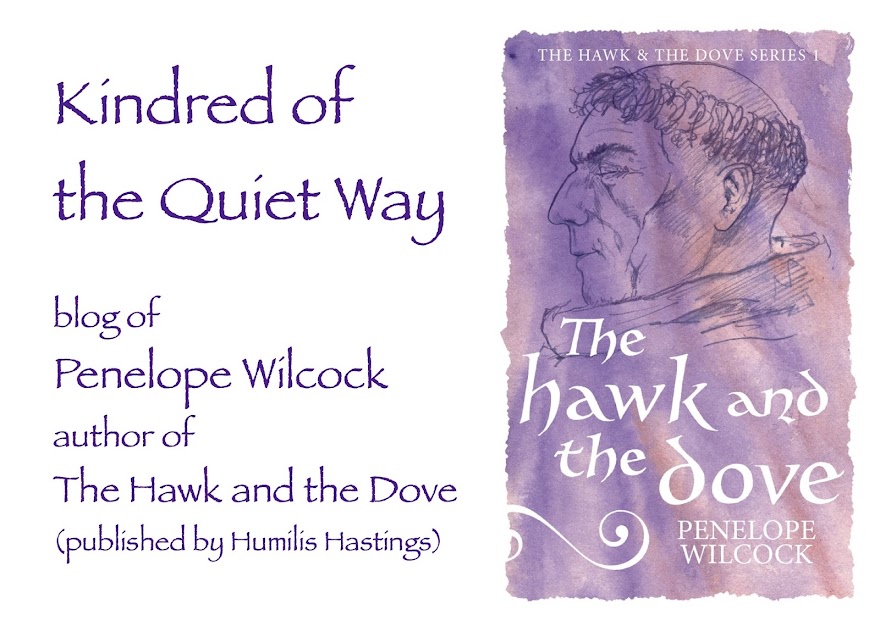In case anyone who reads here is involved/interested in professional writing, or just in honing creative writing skills generally, for what it's worth I thought I'd share with you something I've noticed and found personally helpful.
When I'm editing people's novels, I often come across a problem I've experienced in my own writing of fiction, which is what I think of as a Wednesday.
Let me explain.
As a schoolgirl (I hated school), I found Wednesday the most difficult day of the week. I'd already lived through Monday and Tuesday, but we weren't nearly through — there was still Thursday and Friday to go before we reached the weekend. Wednesday was the week's nadir.
When you write a novel (or for that matter a non-fiction book, even a chapter or an article), if you just start at the beginning and work through to the end, you almost inevitably create a Wednesday — a slow, heavy, boring bit in the middle. Like the middle of a Yorkshire pudding, or a cake that sinks.
The way to avoid this — I apologise if this seems so obvious to you you wonder why I'm even saying it — is to structure the piece you are writing into very small sections.
For example, recently I had to write a medium length article about a rather complicated thing. To stop it bogging down into a Wednesday as I lost my way and sank in the morass of information, I categorised it into three main sub-headings, then also allocated a short word length for an introduction and for a conclusion. That way, I was able to create a rhythm of rise and fall throughout the piece. It also kept the informational focus sharp, because I wasn't trying to write about all the elements all the way through.
It's like stashing your grocery shopping in bags, instead of trying to pick up the whole pile of loose items in your arms to carry them home.
If I'm writing a novel of, say, 65,000 words, I leave 1000 for a margin to expand into. Then I divi up the 64,000 into 8 chapters of 8,000 words each. I take the trajectory of the narrative and divide it into sections, with one important episode allocated to each chapter — something with emotional intensity and personal encounter. I write each central episode separately, so that each chapter has a mountain instead of a valley as its emotional structure. Then, to give readers a rest and create a rhythm in the book, I write the edges that join the mountains together — and these include contextual detail (that creates interest but without intensity), and humour (that rests people from emotional intensity).
By structuring the book in this way, it is possible to completely avoid falling into a Wednesday — there simply isn't one, because the book is structured section by section instead of as a whole; and the sections don't have Wednesdays either, because they're shaped as mountains, not as valleys.
I commend it to you as a useful way of making it less tiring and less daunting to write a novel, and to create a rise and fall like breathing that carries your reader through.
I hope you find this helpful, not boring or superfluous.
xx

10 comments:
Rather fascinating. I do a similar thing on long runs. As they say, how do you eat an elephant? One bite at a time.
Peace,
Bean
I have never seen this explained so succinctly (or even explained) before, and I have been interested in writing for yonks! Thank you. Mairin.
I have written essays and assignments and I have broken them down as you have suggested. However I love how you describe this process for a much larger work. It was fascinating to read. Thank you very much.
:0)
Hello, friends!
xx
This is also why I rarely deliver a whole sermon when preaching, but prefer to break it up into sections. But I've been told off for it more than once by people who think a whole sermon is better or who were startled to find I stopped talking while their interest was still held!
What a brilliant way of explaining the process. Must admit I didn't mind Wednesdays as I would think half way there, on the home straight!
:0D
It's important to include the shaping as well as the compartmentalising.
The eating an elephant one bite at a time, in terms of writing, can be translated into the string of beads approach — "and then . . and then . . . and then . . ."
The division of a sermon into sections can feel abrupt, and break the spell, so that people's interest is lost and the experience of focus spoilt.
It's necessary also to include the rise and fall, so that each section has its own depth and intensity, and the linking passages allow the reader to come out of that before entering it again for the next section, and feel a sense of completeness about each part.
I'm not saying those who have commented aren't doing that or have misunderstood, just clarifying that this is not just about breaking up a big thing into bites or sections, but is also about the rise and fall like breathing, and the texturing of the narrative.
Thank you for the extra clarification. I find this a helpful concept.
👍
Post a Comment